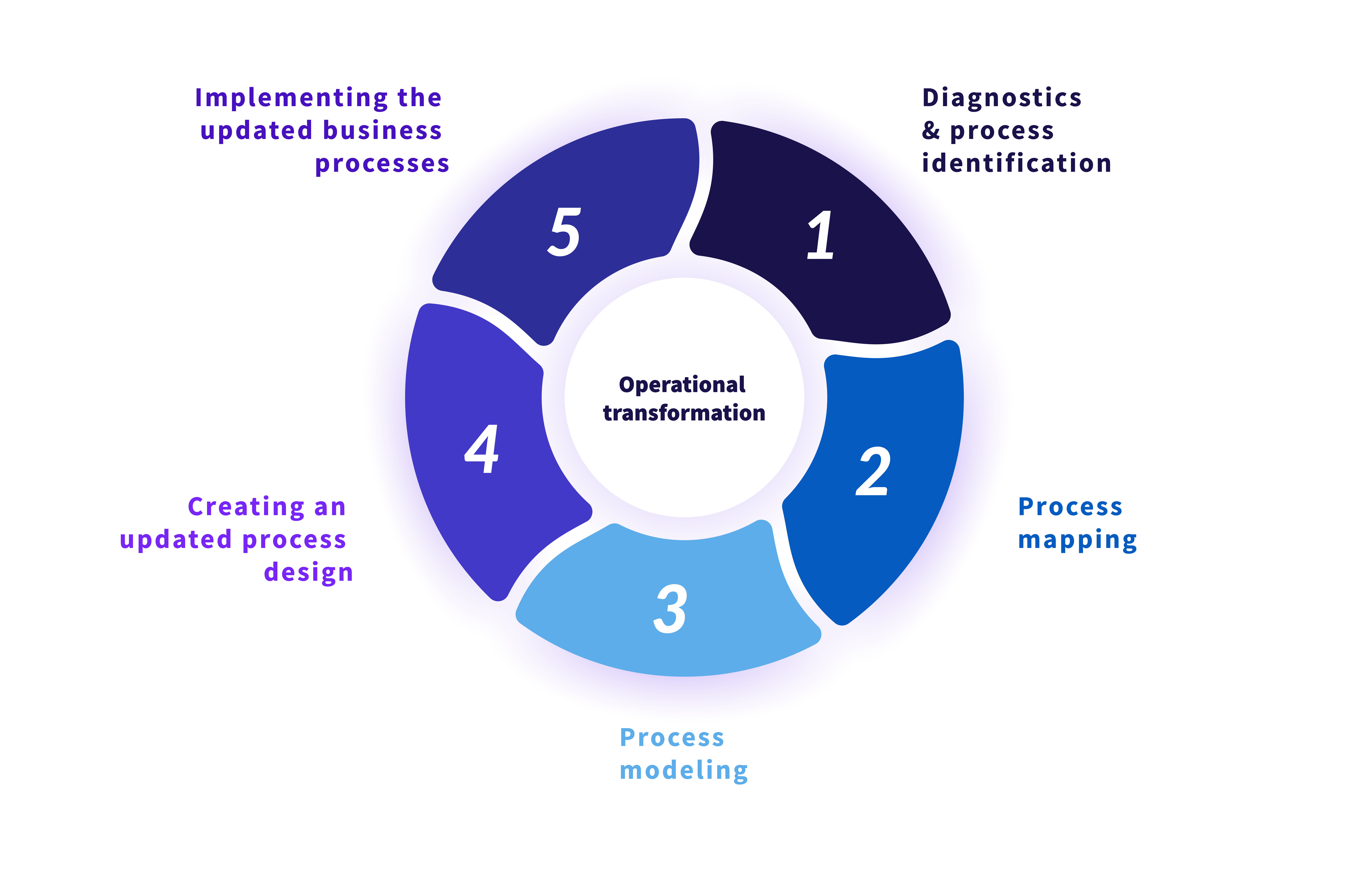
We assist companies in transforming key operations such as production, procurement, and supply, service operations, product development, and supply chains. Specifically, the operational transformation process includes the following steps:
1. Diagnostics and process identification;
2. Process mapping;
3. Process modeling;
4. Creating an updated process design; and
5. Implementing the updated business processes.

Study and Documentation of Existing Processes
The foundation of business process optimization begins with a thorough study of an organization's internal operations. In close collaboration with the client company, we analyze its organizational structure and core business domains. Through interviews and meetings with employees, we gather in-depth information about existing processes, complemented by real-time observations of operations. Once the processes are thoroughly examined, we systematically document the current process landscape.
Analysis of Documented Processes and Their Objectives
The analysis phase is a critical step in the optimization process. At this stage, we visualize the documented processes, allowing us to identify inefficiencies such as redundant steps, repetitive actions, and other bottlenecks that slow operations, increase resource consumption, and reduce overall business efficiency.
Additionally, our team assesses the purpose of each process, evaluating whether its objectives are clearly defined and effectively aligned with business goals. If discrepancies exist between a process and its intended purpose, we investigate the root cause and determine how the process should be restructured to better serve its function within the organization.
Process Redesign and System Optimization
Following the analysis phase, we refine and redesign processes by eliminating inefficiencies and restructuring workflows. In collaboration with the client, we develop optimized procedures tailored to the company’s business model and strategic goals. This inclusive approach ensures that the new processes are both effective and sustainable.
Implementation of Optimized Processes
The integration of optimized processes into the organization’s daily operations marks a crucial phase in the transformation journey. Our team actively supports the company during this transition, ensuring seamless implementation. Based on our recommendations, we facilitate the smooth adoption of new workflows, minimizing disruptions and maximizing efficiency.
Testing, Monitoring, and Continuous Improvement
The optimization cycle is completed with rigorous testing and ongoing monitoring of the newly implemented processes. This phase serves two key purposes:
- Identifying and resolving any potential issues in the redesigned processes.
- Evaluating the effectiveness of the optimization effort by assessing performance improvements and cost reductions.
Through continuous monitoring, we ensure that the optimized processes deliver tangible results and contribute to long-term business success.
As a result, the organization becomes process-oriented, which entails:
- Using modern management methods (e.g. BPM) to improve organizational efficiency;
- Both primary and supporting processes being described and mapped using business process model and notation (BPMN)
- Identification and elimination of bottlenecks in business processes that slow down operations;
- The removal of redundant elements in processes to increase efficiency and productivity; and
- Greater customer satisfaction achieved through seamless processes and improved quality.


